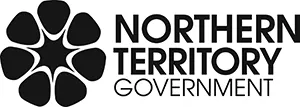Mataranka water allocation plan
| Plan | Mataranka water allocation plan 2024-2034 PDF (708.4 KB) Mataranka background report 2024-2034 PDF (9.6 MB) Mataranka implementation actions 2024-2034 PDF (539.8 KB) |
|---|---|
| Key messages | Mataranka key messages PDF (181.4 KB) Listen to the key messages in East Side Kriol MP3 (4.4 MB) Frequently asked questions - managing water in and around Mataranka PDF (11.7 MB) |
| Map | Daly Roper Beetaloo water control district and Mataranka plan area map |
| Area | 9,282km2 |
| Declared date | 17 December 2024 - read the Government Gazette published on 17 December 2024 |
| Duration | 10 years |
| Review | 5 years |
| Expiry | 18 December 2034 |
The plan applies to a 9,282km2 area within the Daly Roper Beetaloo water control district.
It covers 0.69% of the Northern Territory (NT) and 2.82% of the water control district.
The Tindall Limestone Aquifer is the main aquifer in the plan area. It is part of the larger Cambrian Limestone Aquifer, which covers about 160,000km2 of the NT.
These aquifers are interconnected, but each has different hydrogeological features, and water flow through them varies.
Consultation
Extensive consultation was carried out in early 2024 to inform the draft plan. This included:
- feedback from the appointed water advisory committee
- public submissions via Have Your Say NT
- various stakeholder and community meetings.
Read more about the feedback and the government’s response in the consultation summary PDF (819.0 KB).
Plan objectives
The main objectives are to:
- balance the protection of key environmental values dependent on water with the overall benefits provided by the water resources
- ensure water licence decisions account for Aboriginal and other cultural values dependent on water
- predict and protect water for rural stock and domestic purposes
- provide long-term security of a sufficient quantity and quality of water for public water supplies
- set aside water to support local Aboriginal economic development
- provide access to water to support sustainable development for the benefit of the region.
Beneficial uses
The beneficial uses within a water control district are declared by the minister under the Water Act 1992. They apply to the use of surface water and ground water within the district.
Read more about the beneficial uses within the Daly Roper Beetaloo water control district.
Water resources
The Mataranka Tindall Limestone Aquifer sustains the:
- springs of Elsey National Park, Rainbow and Bitter Springs
- dry season flows in the Roper River.
The aquifer stores about 32,700,000ML of water. Storage has increased by 39,000ML per year since the 1960s, despite water being extracted since around the early 2000s.
Surface water
The surface water resource in the plan area is the Roper River.
Licences
The plan does not permit surface water extraction licences within the plan area.
Surface water can be used for rural stock and domestic purposes without a licence.
Groundwater
The Tindall Limestone Aquifer ground water resource stores about 32,700,000ML of water.
Storage has increased by 39,000ML per year since the 1960s, despite water being extracted since around the early 2000’s.
Read the background report to find out more about the geological makeup of the aquifer.
Allocations
The plan identifies 3 groundwater water management zones where an estimated sustainable yield has been established.
These zones include:
- North Mataranka
- South Mataranka
- Larrimah.
The table below shows the estimated sustainable yield of each groundwater management zones in the plan.
| Beneficial uses | North Mataranka | South Mataranka | Larrimah | Total |
|---|---|---|---|---|
| Rural stock and domestic | 221 | 331 | 200 | 732 |
| Public water supply | 103 | 390 | 20 | 513 |
| Aboriginal water reserve for Aboriginal economic development | 458 | 935 | 3,592 | 11,171 |
| Other consumptive uses - agriculture, aquaculture, cultural, industry, mining and petroleum activities | 1,952 | 22,801 | 31,416 | 50,028 |
| Environment* | 10 | 10 | 10 | 30 |
| Total allocations ML/year | 2,744 | 24,492 | 35,238 | 62,474 |
*Nominal allocation within consumptive uses as required under section 22A(2) of the Act. The majority of water retained for non-consumptive uses is to:
- maintain important ecological functions and
- for cultural purposes and values of water in the region.
Licences
You can view current water licences on the water licence portal.
Aboriginal water reserves
An Aboriginal water reserve is established by the plan, with 4,574 ML per year made available for Aboriginal economic development in the plan area.
This volume may increase to 11,171ML per year with the recovery of unused water.
Announced allocations
Read the announced allocation (AA) decisions for the draft plan area:
- AA decision 2022-2023: Mataranka Tindall Limestone Aquifer PDF (1.3 MB)
- AA decision 2021-2022: Mataranka Roper River region decision PDF (267.7 KB)
- AA decision 2020-21: Mataranka Tindall Limestone Aquifer PDF (787.3 KB).
Read more about AA.
Reports and publications
- Background briefing PDF (1.9 MB)
- Daly Basin groundwater resources assessment - North Mataranka to Daly Waters 2015
- Upgrade of the coupled model of the Cambrian Limestone Aquifer and Roper River Systems 2020
- Water resources modelling of the Mataranka - Daly Waters Region: Mataranka Tindall Limestone Aquifer water allocation plan area natural groundwater balance 2021
- Synthesis of existing information on the surface water resources of the Roper River Basin 2023
- Water resource assessment for the Roper catchment 2023 - go to the CSIRO website.
Maps
- Mataranka water management zones
- Mataranka designated eligible land for the Aboriginal water reserve
- Mataranka water monitoring network
- Tindall Limestone Aquifer, King River to Daly Waters map
- Mataranka Tindall Limestone Aquifer water allocation plan: management and protection zones
- Springs of the Mataranka area
- Mataranka Tindall Limestone Aquifer conceptual image.
Contact
Contact Water Resources on 08 8999 4455 or email waterresources@nt.gov.au.
